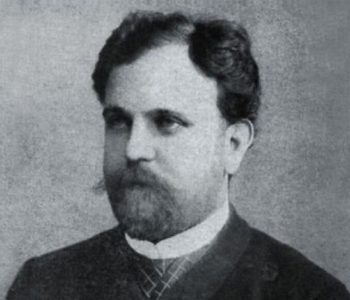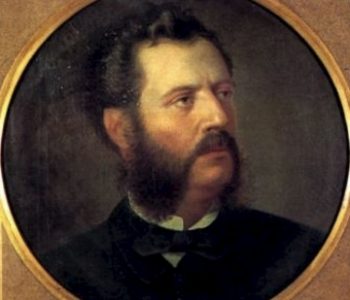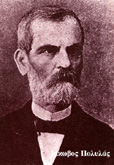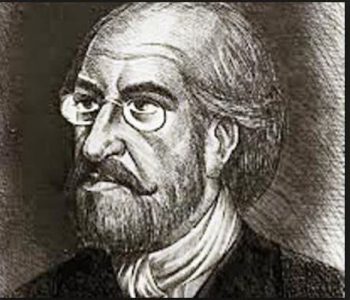
Raffaele Liberatore, Viaggio pittorico nel Regno delle due Sicilie
Introduction by R. Nicolì
The text by Raffaele Liberatore, of which some parts relating to the Apulian area were selected for the POLYSEMI Digital Library, was published between 1829 and 1832 by Cuciniello and Bianchi. It is a vast work made up of three in folio volumes and 180 engravings whose aim was to illustrate the landscape and architectural beauties of the Kingdom after a long and scrupulous reconnaissance.
The text is ascribable to a kind of Romantic literature that along with its renewed sense of history aimed to recover the memory of the places and the characters proper to the peoples placed in them. However, this was a shared European attitude which had a peculiar and long-lasting fortune in Naples, where the historical-descriptive investigation was combined with a consolidated eighteenth-century interest in economic, juridical and sociological analysis. The attention given to the individual local situations as described and illustrated after careful and targeted surveys testifies to the will of many intellectuals to recover the value of identity memory according to the principles characterising the Romantic ideology.
Multiple descriptions of the various Kingdom districts analogous to those by Liberatore proposed here produced a conspicuous number of texts in which the relationship between the natural conformation of the landscape and its artistic heritage plays a pivotal role in the articulated events related to the construction of the historical and anthropological identity memory of the Kingdom, in the first half of the nineteenth century[1].
Raffaele Liberatore[2], who is certainly more famous for the drafting of the Dizionario universale italiano (Naples, Tramater, 1829-1840, 7 volumes), was well-known amongst the intellectual circles for his vast culture that embraced mathematics, philosophy as well as classical and modern letters. In Naples he also received an exclusively legal education and with Giuseppe Ferrigni and Carlo Troya, in 1820 he also began his activity as editor for the journal «Minerva Napolitana»[3], the most authoritative periodical of Neapolitan constitutionalism. The following year the newspaper was suspended and its collaborators were exiled. Liberatore then took refuge in Rome and the exile became an occasion to meet lots of Italian and foreign liberals and other Southern exiles. In Rome he remained until October 1828, the year in which he received the grace from Francis I after repeated pleas. His own gratitude towards the sovereign led him to dedicate his Viaggio pittorico nel Regno delle Due Sicilie to the sovereign himself, in agreement with the publishers. Hence, it is a courtier journey destined to export the myth of the court and to promote its myth.
Drawing on the eighteenth-century Voyage pittoresque by Abbot Saint-Non (Paris, 1781, 3 volumes) whose views are considered to be prototypes of the French eighteenth-century perspective, with this publication editors Cuciniello and Bianchi undertook the task of offering a picture of the places of the Kingdom of the Two Sicilies as they appeared in the first half of the nineteenth century in all their most significant aspects.
Liberatore illustrates the journey through the various provinces by emphasising, for each city or locality, first of all its historical information; he then provided erudite information on its artistic aspects. The series of views, monuments, churches, squares and characteristic places of cities and towns in southern Italy, of Sicily (to which the entire third volume is dedicated), Naples, its immediate surroundings and Puglia is particularly detailed.
Another reason – perhaps of a more commercial nature – for which publishers Cuciniello and Bianchi had started a series of these publications was related to the increase in demand for souvenir-views by foreign tourists. Namely, the two volumes of the Itinerario istruttivo da Roma a Napoli ovvero descrizione generale di questa celebre città e delle sue vicinanze, printed in Rome in 1816 by Mariano Vasi, then in Naples at Tipografia Porcelli in 1821 and reproposed, again in Naples, in French in 1824. The success was probably attributable to the 50 illustrations contained in the volumes which spread, the images of places and monuments described in the text through the use of modern postcards.
The Viaggio pittorico nel Regno delle Due Sicilie, however, differs from other contemporary texts for some innovative elements: first of all, the presence of the term ‘pictorial’ in its title. If it is true that until 1750 the term ‘pittorico’ (‘pictorial’, our translation) substantially coincided with ‘picturesque’, as theorised by English painter and treatiser Alexander Cozens[4], in the nineteenth century the difference is substantial: the picturesque coincides with the sublime, its repertoire is as varied as possible – ranging from fallen trunks to pools of water, from puffy clouds in the sky to grazing animals – and provides the use of colours which are sometimes gloomy, waxed, with a predominance of anomalous views. The use of the term ‘pictorial’ seems to rather favour the will to base the drawings on their real expressiveness, with no idealisations. The drawings made for the Viaggio pittorico nel Regno delle Due Sicilie therefore seem to meet the needs of the moment and of a more “tourist” consumption. Their innovation also concerns the technique adopted for the small format tables in the volume which were made according to the lithographic method – i.e. with a very rapid execution which is not meditated but aimed at making the place without any emotional commitment to it.
These innovations turned his work into one of the most important editorial accomplishments at the time of Francesco I. In 1833, when talking about the productions of the Cuciniello and Bianchi typographic workshops, the Venetian magazine “Giornale di belle arti e Tecnologia”, for example, dedicates a page of praise to Liberatore’s vast work, considering it the finest work that came out of their presses and blaming his predecessors for not taking care of the choice of subjects, having rather focused on «mettere in mostra la loro attitudine al creare briosi partiti, che [a] presentare la pura e vera expressione dei luoghi». The author of the pictorial voyage has carefully selected the monuments and places that the illustrators have rendered without too many references to “fatti storici e costumanze del popolo”, leaving readers with the opportunity to know them rather through the learned and diligent information provided by Liberatore, which is “piene di notizie importantissime di storia ed ingegnose ricerche ed opinioni di cose d’arte”, as required by a purely Romantic attitude.[5]
The work was initially published in fascicles, each including three lithographic tables and the relative descriptive text sheets written by Liberatore, which were promptly translated into French by his wife Elisa Zire.
The selected parts for the POLYSEMI Library are related to the descriptions of some key points of the Bari territory, including Barletta and Trani (now BAT), Monopoli as well as Taranto. Taranto is a municipality falling into the Project Area, for which Liberatore provides two dense pages of historical information starting from the eighth century B.C. with a colony of Spartans that soon turned it into the most powerful Magna Graecian city in southern Italy, in constant conflict with the neighbouring Samnite and Lucan populations, but above all with the Roman Republic; because of this, the city was forced to ask for help from Pirro first and then from the Carthaginians, without ever succeeding in avoiding capitulation under Quintus Fabius Maximus in 209 B.C.
Liberatore also recalls the mythical foundation of the Magna Graecian town, dating back to the time when Neptune’s son (or perhaps of Hercules’) Taras sailed the waters of a river that would take its name, Tara; in the same waters Taras disappeared after the foundation of what would later become Taranto. Another legend tells that Spartan leader Falanto headed for the Apulian land overlooking the Ionian Sea following the advice of the oracle of Delphi who had predicted that he would found his city when he saw the rain falling from a clear sky (in Greek ethra); the oracle came true after reaching Falanto at the mouth of the Tara river, as he fell asleep leaning against the womb of his wife Ethra who bathed her face with her own tears. After the most recent references to history, the author presents Taranto to a hypothetical traveler “abbracciata dall’onde […] a guisa di sottile navicella, che due ponti da levante e da tramontana, quasi due cavi, tengono all sponde legata” and continues: “Tepide qui sono le brume, lunga la primavera; la tempesta mai non commove i flutti di quest interno mare; la bianchezza del quale soavemente si contrappone al verdeggiare delle digradanti colline che lo coronano”. By means of this description Liberatore defines the scenographic layout of the town overlooking the Ionian sea.
As for other cities, there is always a historical excursus which, albeit very detailed, is always displayed in a discursive manner, with a modality evidently linked to the practical aims of the work and to the author’s willingness to spread its reading among a non-specialist audience. Then follows a description of the places with a careful “scelta di quanto di più vago e pregiato si ammira in un paese ove la Natura e l’Arte profusero a gara i loro tesori” as the editors advise on the page of dedication to the sovereign. A double guideline is thus identified: on the one hand, the historiographical investigation and, on the other, the descriptio of the countries in their modernity. As for the first, it should be noted that in the years in which Liberatore wrote, i.e. in the first decades of the nineteenth century, the enormous effort by the historical school to find and structure the documents of the past was recorded with the aim of defining the lines in terms of greater certainty of the Italian cultural tradition. For this reason, also the approach of travellers to the history of the countries visited – from the most remote to the most recent – bears the traces of this tendency to reconstruct their micro-history.
Hence, Liberatore does not seem to be interested in demonstrating his literary qualities (which are nonetheless limited) but rather wants to provide erudite and dispersed information, to move on to the documentary particular and, finally, to the suggestive description of foreshortenings. The painter is left the task of fixing the single image. When dealing with Barletta, Liberatore describes “le vie belle lastricate”, its castle and embankments, the pleasant countryside that Ofanto offers, but leaves the lithographer the task of “showing” the really neuralgic point of the city: “Ma la più bella vista che si abbia della città è dalla parte del suo molo; e per di là sogliono ritirarla i pittori, siccome pur fece il nostro”. When talking about Trani, in certain passages he is inclined to a type of description that seems to look at idyllic poetry (being re-launched in those years) rather than at the conventional tradition of the locus amoenus : “Che se vorrai, da quelle care ombre difeso, chiudere gli occhi al riposo, molcerà i tuoi sonni il basso mormorio delle marine onde che fra que’ tanti scoglietti si rompono, ovvero lo zampillare delle acque vive, le quali pur da essi pollano mirabilmente, grato ristoro alle fauci”. Liberatore thus evokes a pleasant and transfigured atmosphere.
More concrete and certainly less transfigured is the description he draws of Bari, the city of which he provides, albeit in a separate paragraph, the story of the Basilica di San Nicola and of the saint himself; Bari is stretched to the east, “siede alla riva del mare, in una penisola che sporge sull’Adriatico verso l’oriente” and is an evolving city, in which the historical part is accompanied by a new one. As one would expect, there is always a short, lively passage aimed at describing a small glimpse of humanity; the only example in these pages is represented by two young women of Bari: “le donzelle svelte della persona, linde, ed acconce secondo antica foggia la chioma, [che] danno più ch’altri di quella terra a diveder il greco sangue che scorre lor per le vene”. It is a sort of focus, a double level on which to cross the gaze: the story first takes shape through a panoramic and comprehensive drawing, with a description of the origins of the city that was “da’ Greci coloni abitata” to be eventually found in the admirable detail of its meticulous description.
-
Please consult the various contributions on this topic which converged into the volume Identità nazionale. Miti e paradigmi storiografici ottocenteschi, edited by A. Quondam and G. Rizzo, Bulzoni Editore, Rome, 2005. ↑
-
For a complete bibliography on Raffaele Liberatore please consult: A. De Angelis, Elogio di Raffaele Liberatore , Naples, 1843; E. Rocco, Notizie Biografiche di Raffaele Liberatore , in R. Mastriani , Dizionario geografico-storico-civile del Regno delle Due Sicilie, Naples, 1839-1843, pp. 395-412; F. Lo Parco, RL letterato e pubblicista napolitano della prima metà del secolo XIX , in Atti della Acc. Pontaniana , s. 2, XXXIV (1929), pp. 75-97; G. Fazzini – D. Proietti, Liberatore, Raffaele , in Dizionario Biografico degli Italiani, whose online version is available at the following link: http://www.treccani.it/enciclopedia/raffaele-liberatore_(Dictionary-Biografico)/ (last accessed 15/7/2019). ↑
-
Its first issue is dated August 8th, 1820, whereas its last one was issued on March 10th, 1821. The periodical is believed to have provided original ideas about a future confederation of the Italian states that were forerunners for some aspects of Mazzini’s and Gioberti’s thought. See also V. Trombetta, L’editoria napoletana dell’Ottocento: produzione, circolazione, consumo, Franco Angeli, Milan, 2008, pp.16-19. ↑
-
See GC Argan, L’Ottocento in L’Arte Moderna, Sansoni, Florence, 1st ed. 1970, p. 8. ↑
-
See Di alcune opere della litografia napoletana. Memoria di Michele Ruggiero inserita nel Progresso , in “Giornale di belle arti e tecnologia”, Paolo Lampato Tipografo Editore, Calle del Doge di San Maurizio, Venice, Year 1, May 1833, p.153. ↑






